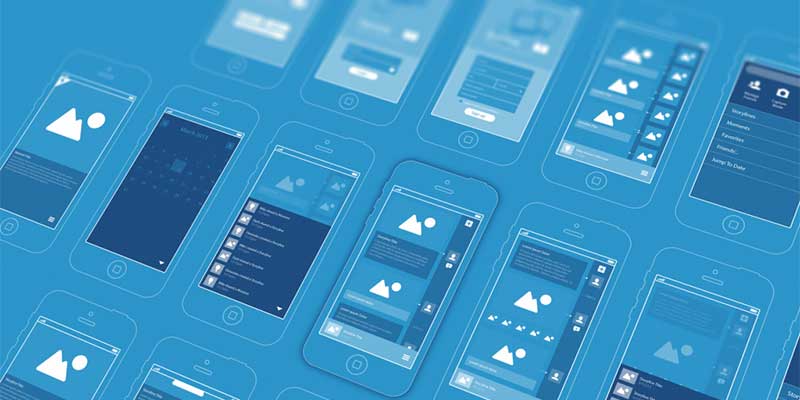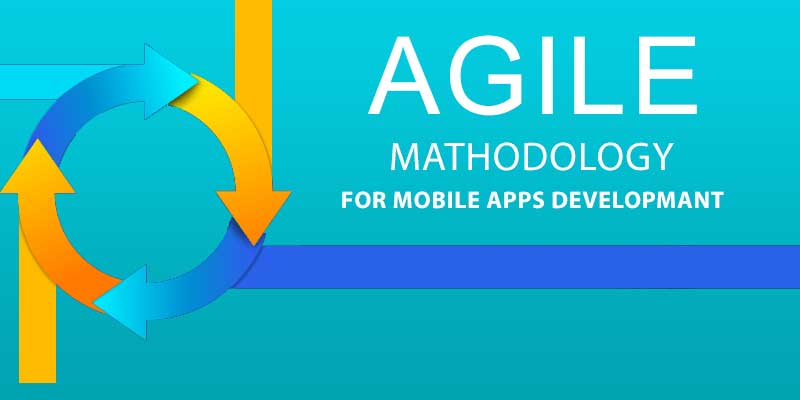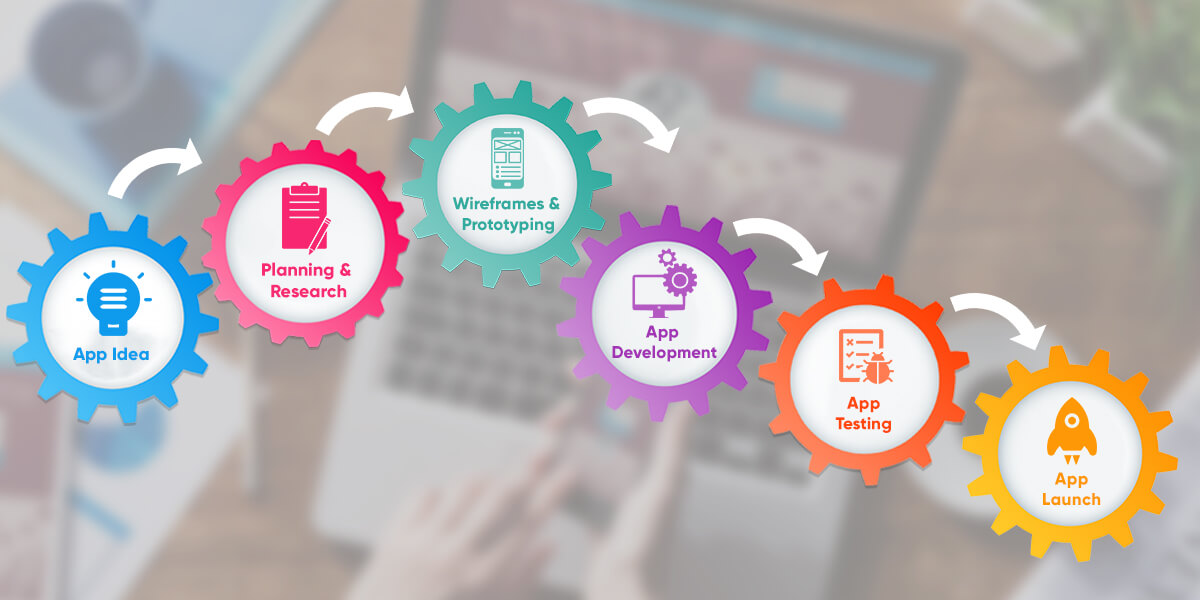An Overview of Different Stages of Mobile App Development Lifecycle
- Mobile
- June 5, 2017
Based on one survey smart phone users spend their 90% of mobile time on apps. Fortune 500 companies generate 42% of all mobile sales as well as average time people spend on their mobile app is also increased by 21%. Many other surveys predict that the era of mobile app is growing swiftly with the development of more innovative apps.
When looking for developing a new mobile app, one should make a foolproof strategy to make the app development lifecycle proficient and develop a popular mobile app.
From identifying unique app concept to its successful implementation, a mobile app development company requires comprehending the recent trends, tools and technology to market an app using winning strategy.
Let’s take a look at the different stages of mobile app development lifecycle:
1. Comprehend the App Concept & In-depth Market Research

Finding an innovative and unique concept for a new app leads you to make it popular and successful. The first phase of mobile app development is very important as it is associated with your target market.
There are several aspects that require discovering in this first stage of app lifecycle. You need to make a list of questions and find answers to get a definite outcome.
- First of all decide the purpose of your app.
- Know what achievement you are expecting from your app?
- What are your target markets/end users?
- List out your key competitors, what best they offer to users/what users expecting more from their app? How best your app stays competitive to defeat your rivals or how you can make your app unique compared to your rivals?
- Selection of right mobile app platform
- How much time app development requires? When will you expect to launch your app?
- What is your app budget?
- Will you choose in-house app development or hire a mobile app development company?
- Select a team of professionals work on the project as well as assigning work to team members based on their proficiency.
- Which factors you will consider making your app marketing successful and boost conversion?
You need to make profound research and analysis to get answers of all such questions. Without detail analysis of all such aspects, you should not move ahead to start your development process.
2. Set up Key Objectives of Your App

This is the planning phase of your app lifecycle, which is very significant. You need to make decisions about all features and functionalities require in your app.
- Also make sure that your app is capable to accomplish your end-users demands
- What features your app proffers to make it unique?
- What factors make your app more advanced?
Without offering your users bunch of common features, bestow some out-of-the-box features attract them to use your app.
When you develop an app, always consider the recent technology trends helps in making an app quickly such as Kotlin – Latest Android Programming Language. It helps proffering excellent user experience to your target audience.
3. Wireframes & Prototyping – Important Phases in App Lifecycle

This stage is very important as it gives you a rough idea about the look & feel of your app. In this phase, you need to ensure key features you wish to include in your app.
There are several things you need to consider before start wireframing such as comprehending your key objectives, screen orientation, better representation of content, use of well- organizing content, use of blocks, and many more help you in making your wireframe effective.
With the help of foolproof wireframe, you can make your designing and development process more efficient and fast. You should also focus on the opportunities to include in your project as well as factors that enhance user experience.
Wireframe helps you to guide for the backend structure that you require supporting the app such as APIs, servers, data diagram, data integrations as well as other services such as push notifications. Any technical limitation found in the backend development process can be overcome in this initial phase.
App Prototyping helps you in making the development process easier as it offers an opportunity to evaluate design ideas, collect feedbacks, realize dead links, and focus on several other important aspects. You can use online prototyping tools helps to make your app development process easier.
Read also: The Difference Between Wireframe, Mockup and Prototype
4. Developing the App – Adopt an Agile Methodology

It involves several processes. If you are not using backend as a service (BaaS) provider or an app development platform, you need to setup the databases, storage solutions, servers and APIs for your app backend.
You should select an Agile Methodology for mobile app development as it enables to make the changes, and implement new features efficiently as well as keep evolving with the need of changing trends.
You require setup an account for a developer in the app store that you choose for your app launch. It requires some days to get started hence, if you don’t have a developer account, take the steps accordingly.
You should consider app store guidelines before starting development to prevent your app from rejection by the app store.
In this stage, your designers will make the skins for your app that let you understand the look of your app. These actual screens represent the interface that your users finally utilize to make interaction with your app.
Therefore, in this stage, you should ensure that the design includes all the feedback and ideas as defined in early phase. In this stage, UI/UX details make the difference as it impacts the appearance and functionality of an app that users have to experience.
5. App Testing & Debugging – Require Foolproof Methodology

This is one of the most important phases in order to make your app seamless. Ensure different testing such as usability testing, interface checking, compatibility, service, as well as performance, security checks, operational testing, and several more.
Building well-planned testing structure helps you to reduce your time and money in the development process.
6. Launch the App

When you found your app ready for launch, you can submit it in the app store or the play store. It takes time to get approval from the app store around 4-6 days, while Android apps need 3 hours to get approval.
App Store Optimization and App Marketing
Once your app gets approval, start focusing on app store optimization and app marketing to create awareness of your app within your defined target audience.
Make research to find targeted keywords to use in your app title, description before you submit your app. With effective landing page that comprises app name, icon, screenshots, promotional videos, contact information, link to download app and other information helps in promoting your app efficiently.
Remember, your app marketing and promotion is equally important as its development in order to enhance its reach and explore potential markets.
Conclusion
In order to make mobile app development process efficient and trouble-free, app developers should comprehend the app development lifecycle precisely. It helps you in many ways to make your app seamless, feature-rich and functional compared to your rivals apps.
Efficiently developed app reduces chances of rejection by the app store. From discovering concept to app launch, every phase has its own importance in the app development lifecycle; hence, mobile app developers need to comprehend the importance of each phase before initiating further.













